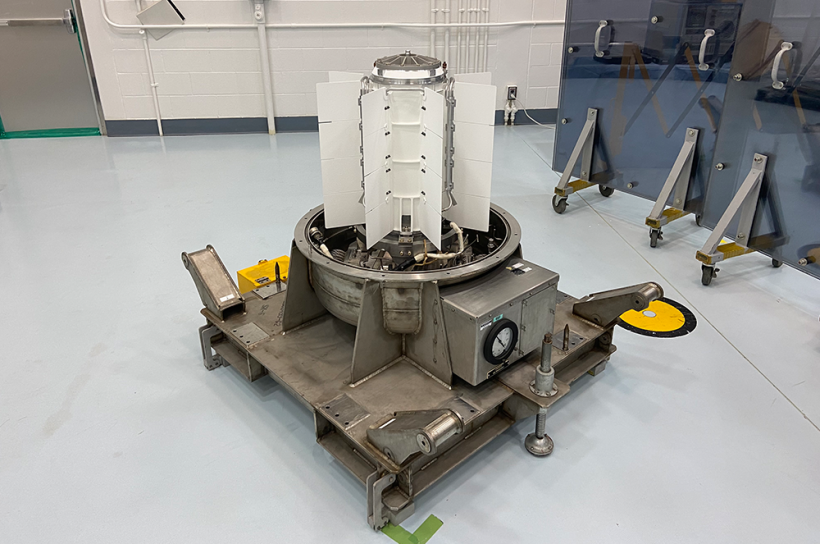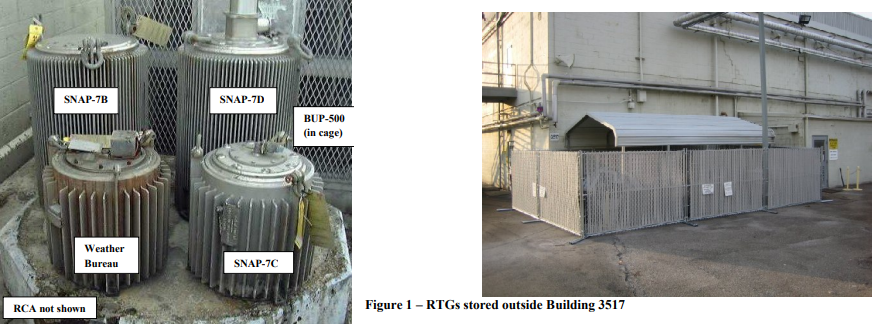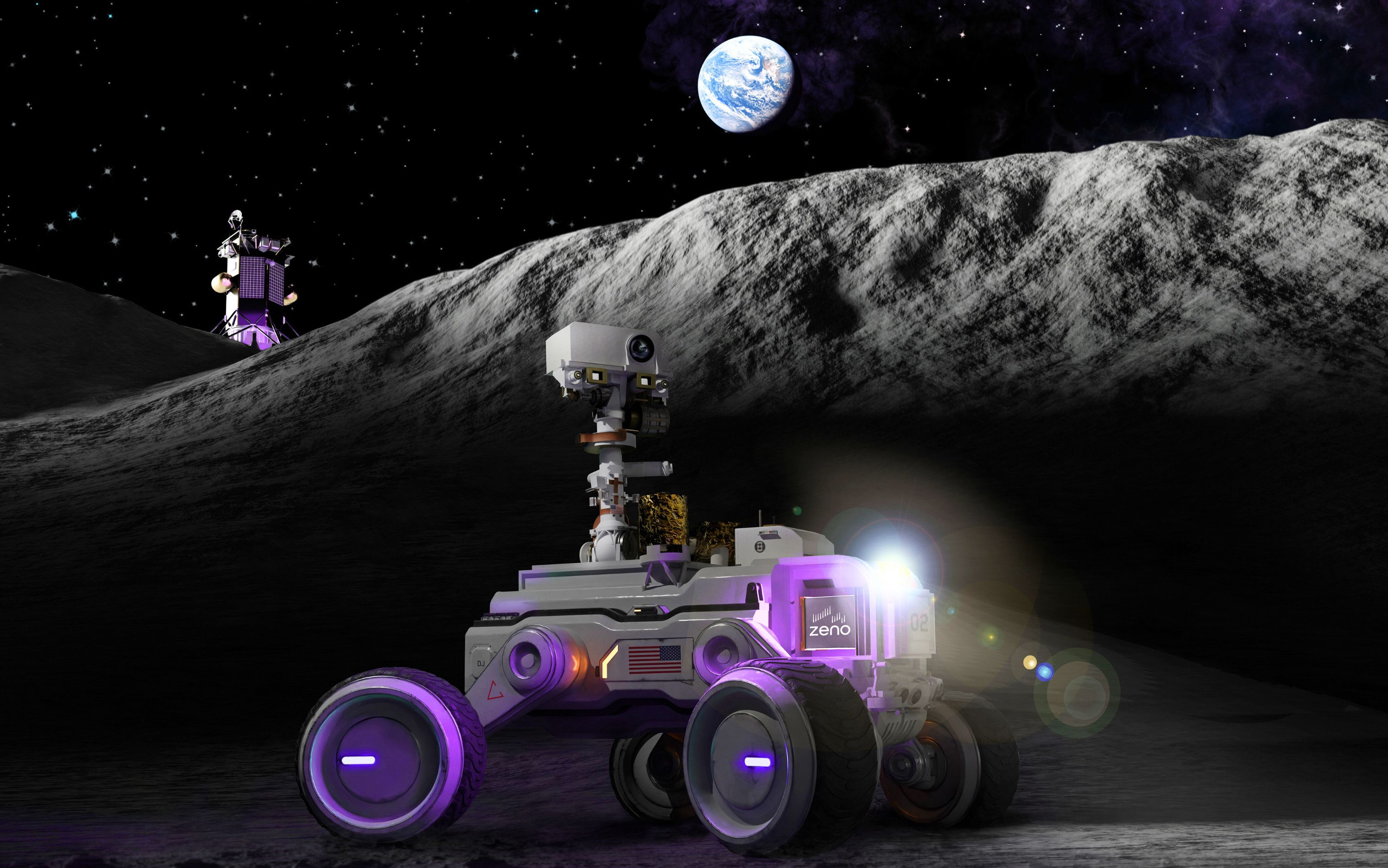Turning waste material into power is one of the great ambitions of atomic energy. Recycling used nuclear fuel from nuclear power plants happens in a few countries around the world, but this isn’t the only way to re-use old nuclear materials.
This post originally appeared as a twitter thread
Zeno Power, a radionuclide power system start-up, recently announced they are going to re-use material from the largest Strontium-90 heat source ever built. This heat source has been sitting in storage for decades, long considered waste waiting for disposal.
Both the old and the new uses of this material are for radioisotope power systems, sometimes called radioisotope thermoelectric generators (RTGs). This technology is a little different than a nuclear reactor, but they both harness the energy stored in unstable atoms. Nuclear reactors use nuclear fission, which is the breaking apart of atoms by free neutrons to release energy. Only a few select elements (and specific isotopes) can be used to sustain a nuclear fission chain reaction. Commonly-known fissile nuclides are uranium(-235) and plutonium(-239).
Radioisotope power systems instead rely on radioactive decay, where the unstable nucleus of an atom emits radiation in a predictable manner. Both nuclear fission and radioactive decay are naturally-occuring nuclear processes, but there are key differences when it comes to harnessing these reactions to produce energy. Nuclear fission can be used to produce large amounts of energy, enough to be a source of electricity. But the process of fission has to be managed by humans in order to produce the desired amount of energy. We don’t have natural nuclear reactors anymore, although several existed billions of years ago.
On the other hand, radioactive decay happens all on its own. You don’t need any “radioactive decay operators” in the same way that you use nuclear reactor operators to manage a nuclear power plant. There’s a trade-off though, which is that radioactive decay produces a lot less energy. We’re talking powering lightbulbs with radioactive decay, compared to hundreds of thousands of homes from a single nuclear reactor.
The good thing about radioactive decay is that it is very well characterized by a single parameter, the half-life. If you know the half life of a particular isotope, you can determine how much of that material will have decayed, and thus produced energy, over a certain amount of time.
Of course, we can’t ever say when a particular atom will undergo radioactive decay, but when you have a whole bunch of them you can use their half-life and say that about half will decay within that time.
Because this one parameter governs radioactive decay, the half-life has to be just right to be useful. A half-life that is too short, like a few minutes, will result in material that decays away immediately. Oops, you’re all out of battery. Also, your material will be putting out a huge amount of radiation (that’s how the energy is released) and that’s undesirable for the living things in that vincinity.
A half-life that’s too long, like billions of years, means not enough energy is being generated by radioactive decay to be useful. This is why uranium isn’t useful for radioisotope power systems. Naturally-occuring uranium, which is comprised of mostly the uranium-238 isotope, has a half-life of 4.5 billion years. That’s almost the age of the Earth. It is radioactive, but it’s so marginally radioactive that it doesn’t give off enough radiation to be useful.
Luckily, there are a couple of radionuclides that have a goldilocks half-life.
Plutonium-238 is the gold standard here. It has a half-life of over 87 years. The Voyager I and II spacecraft have been in space for over 45 years and they’re still decades away from reaching a single half-life of the material.

Everybody agrees, plutonium-238 is great for radioisotope power systems! But NASA already has plans for every single gram that the US can produce.
There’s way more demand than there could possibly be supply anytime soon. Top-line NASA missions like deep space probes will get Pu-238, but not anyone else.

But radioisotope power systems can also be used in remote regions like the arctic, deep in mountains, under the ocean, in satellites orbiting the earth, and even on rovers. So, another radionuclide is needed to build those systems.
Strontium-90 is another useful radionuclide here, with half-life of 29 years. It’s not a new idea to use Sr-90 for power systems, the US built dozens of Sr-90 heat sources 40-plus years ago.
 Sentinal Sr-90 heat source series. Image: Oak Ridge National Lab
Sentinal Sr-90 heat source series. Image: Oak Ridge National Lab
The largest Sr-90 heat source, called the BUP-500 because it was designed to produce 500 Watts of power, was built in the mid-1980s. By the way, 500 Watts is unbelively massive for this kind of systems, and the actual unit initially produced 630 W, which is in technical terms, “bonkers”.

BUP-500. Image: Teledyne Energy Systems
Now it’s considered waste. BUP-500 has been sitting in storage at Oak Ridge National Laboratory for decades, along with other old radioisotope power systems.
 BUP-500 in storage with other radioisotope power systems, where it was for decades. Image: Oak Ridge National Lab
BUP-500 in storage with other radioisotope power systems, where it was for decades. Image: Oak Ridge National Lab
While BUP-500 has already undergone more than one half-life, there is still almost half that original Sr-90 remaining. What percentage? That’s an exercise left to the reader… it was fueled in August 1986. Grab your calculator!
Anyway, given how huge BUP-500 was, there is still a lot of material that can be used! That’s why it’s so exciting that Zeno Power and Oak Ridge National Lab recently announced a partnership. Not only is there an agreement for the material to be re-used, the heat source has already been removed from the lab!

BUP-500 being removed from ORNL. Image: Zeno Power
Zeno has actually demonstrated that they can build Sr-90 systems, they built one last year with Pacific Northwest National Lab (twitter thread)and have customers who want systems by 2025.
For the nuclear industry, this is warp-speed.
There’s something really cool about taking a triumph of 20th-century engineering out of the dustbin of history. Before now, the BUP-500 was literally sitting in a cabinet, waiting to be disposed of. Now, it gets to be born again as a modern radioisotope power system!
 Rover mockup with Zeno power system. Image: Zeno Power
Rover mockup with Zeno power system. Image: Zeno Power
Further reading
- John F. Vogt. “A 500 Watt(e) Radioisotope Thermoelectric Generator Fueled with Strontium-90 Fluoride from the Department of Energy’s Waste Encapsulationa and Storage Facility”. From the 1985 Waste Management Symposia
- Zeno Press Release, Jan 26, 2024
- J. Glenn, J. Patterson, K. DeRoos, J.E. Patterson, and K.G. Mitchell. “Disposition of Radioisotope Thermoelectric Generators Currently Located at the Oak Ridge National Laboratory”, from the 2012 Waste Management Symposia
- R. Shor, R. H. Lafferty, Jr, and P. S. Baker. “Strontium-90 Heat Sources”, report by the Isotopes Information Center at Oak Ridge National Laboratory, 1971
- A. J. Zillmer. “The History of the United States’s Flight and Terrestrial RTGs”. Book chapter from “The Technology of Discovery: Radioisotope Thermoelectric Generators and Thermoelectric Technologies for Space Exploration”. 2023
- S. A. Romano. “Air Force removes nuclear excess from Alaska”. U.S. Air Force Air Combat Command. 2015




Comments